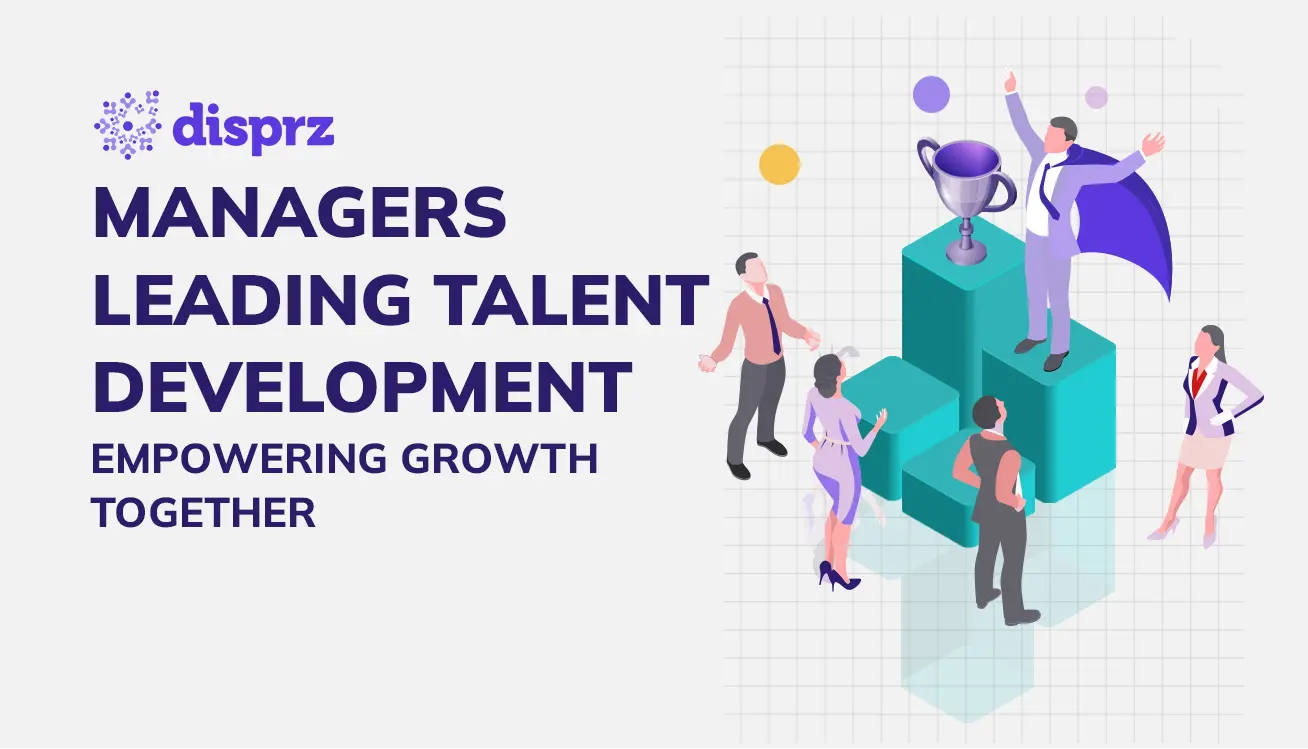
6 min read
• 14 Sep 2023
Learning Analytics – What is it and How to Evaluate
Learning analytics can help optimize L&D and improve employee performance. Hence take a data-driven approach to optimize learning and development
- What is Learning Analytics?
- Why Do We Use Learning Analytics?
- How to identify the loopholes in your L&D strategies?
- Leverage learning analytics – Key metrics to analyze the success of the learning strategies
- Conclusion
-
eBookEmployee Upskilling - A Detailed Blueprint For Building A Skills-Driven Learning Culture
Table of contents
According to Deloitte, 95% of surveyed learning and development organizations do not excel at using data to align learning with the business, run the learning and development organization, or increase the effectiveness of learning methods.
It’s time that you need to ask certain questions around learning strategies, such as—
Are your learning strategies effectively driving results? Are your learners truly benefiting from your skilling and training initiatives? How can you ensure that your efforts are yielding the desired outcomes?
In this blog, we will delve into the essential methodologies that empower L&D leaders in organizations to assess the effectiveness of their learning strategies and make informed decisions to enhance learning outcomes.
What is Learning Analytics?
Learning analytics is a calculative approach that focuses on amassing and analyzing L&D insights based on different learning process metrics. This insight will help L&D managers understand if their planned digital learning process and strategies have converted into desired business outcomes.
Detailed learning analytics provide adaptive guidance for driving better efficiency and more success to the learning process. It enables L&D to move beyond the surface number and provide proof of true returns on investment. Rather than relying on words to justify the learning environment strategies designed and the choices made were effective, L&D can leverage concrete learner analytics to demonstrate the tangible benefits it delivers to drive the business impact.
Why Do We Use Learning Analytics?
Identify Skill Deficiencies
Organizations utilize learning analytics to assess the current skill levels of their employees. This involves analyzing data related to performance, completion rates, and test scores to pinpoint areas where employees may be lacking specific skills or knowledge.
For example, an organization uses learning analytics to analyze employee performance data and discovers that a significant number of employees struggle with data analysis skills. This insight prompts the organization to develop data analytics training programs to address this skill gap.
Enhance learner experiences
Businesses can create content and activities that are more suited to the needs of their learners by studying how their students interact with the training materials. For instance, a business may discover that particular course portions are getting less participation than others and change as necessary, adding more engaging information or using real-world examples.
Monitoring Skill Progression
With the use of learning analytics, businesses can monitor how well employees are picking up new skills over time. This monitoring aids in determining the success of training activities and sheds light on any potential problem areas.
Measuring ROI
By collecting information on training expenditures, monitoring employee performance before and after training, and comparing these metrics to one another, organizations use learning analytics to determine the ROI of their training programs.
This method aids businesses in determining whether or not the gains in productivity from training are worth the money spent on designing and implementing the programs, so assuring the most efficient use of training budgets.
How to identify the loopholes in your L&D strategies?
At the onset of each financial year, your L&D team creates new strategies, sets goals, decides on the budget and gets it approved by the management. While it might be challenging to exceed the goals each year, it is imperative to illustrate the year-on-year growth. With learning analytics, annualized metrics can be displayed across the comparable period to showcase how the L&D is moving upwards with impactful learning strategies.
Learning data analytics gives a holistic picture of what’s working and where you need to walk the extra mile to improve the learning experience. It helps you identify the roadblocks in your workplace learning strategies that are holding you back from reaching or exceeding the goals.
For instance, through in-depth learning analytics research Clara, an L&D manager, found out that employees at the managerial level aren’t enrolling in the courses. So she conducted a session with the managers to understand their learning experience preferences and aspirations. Accordingly, she tweaked the learning programs, which resulted in a better enrollment rate.
Leverage learning analytics – Key metrics to analyze the success of the learning strategies
Learning strategies can have a huge impact on business outcomes, so their success is of paramount importance for L&D professionals. A granular view of various learning metrics through corporate learning data analytics can help determine the effectiveness of the learning environment and processes. Here are a few essential L&D data science metrics that you need to analyze:
1. Course enrollment success rate
Course enrollment is a basic yet vital metric that can determine the success or failure of your learning strategies. In a buffet of online learning programs, it is undoubtedly a matter of concern if the employees are not taking the first step and enrolling in the courses.
For example, let's say you have 500 eligible employees, and 200 of them have enrolled in a specific course:
Course Enrollment Success Rate = (200 / 500) x 100 = 40%
In this case, the course enrollment success rate is 40%, indicating that 40% of eligible employees have taken the initial step of enrolling in the course.
It indicates that something is wrong with the learning activity or the plan created for engaging employees, which is why it fails to capture employee interest. Hence it is pivotal to revisit your strategies and change your approach.
Check how Petronas achieved the target course enrollment rate with Disprz LXP.
2. Course completion rate
The completion rate can clearly show how employees respond to your learning programs and what you should consider changing.
If there is a low completion rate, it is important to identify why the employees choose not to proceed. There are chances that 90% of the employees will complete the courses. However, it is necessary to find out if they retained the information and applied it to work. So ensure you assess the completion rate of each learning activity holistically with other learning analytics research. For instance, the completion rate of the learning video is good, which might give you the impression that employees are learning. However, the low knowledge-to-performance rate implies that the employees might forward and complete the videos without actually learning anything.
So you might have to change your approach and add assessments in between the videos where the employees cannot move forward without taking the assessments. The assessment will help you understand if employees are actually enhancing their knowledge or just completing the courses.
Check how Disprz helped Deloitte achieve 95% course completion rate for their workforce.
3. Course drop rate
Again, this metric indicates that the instructional design might not be impactful leading to a course dropout. According to a McKinsey survey of over 1,200 learning and development professionals, the average course completion rate for online learning is 52%.
According to the survey, the top three criteria influencing course completion are learner motivation, course design, and manager participation.
The digital learning environment and online learning programs might not be engaging or relevant to the learners so they are not completing the courses. For instance, the L&D professional has created a generic learning program for sales professionals on how to manage the sales pipeline.
But the program does not cover what to do when the deals are stuck at a specific stage of the sales pipeline, like the appointment setting stage or closing deals stage.
So, employees enroll but do not find it helpful or relevant enough to proceed and complete the course. Hence it is crucial to find out the reasons for course dropout and rethink the L&D strategies accordingly to deliver learning programs that are relevant to the learners.
4. Assessment score
Employees are investing time in learning but are they enhancing their skills? It is imperative to evaluate various assessment scores to determine if employees are able to sharpen their skills and enhance their capabilities.
A high-end tool like an LXP platform not only helps in creating a wide array of assessments but also tracks the assessment score. The entire assessment data is streamlined in one place, which helps in tracking the progress of the employees.
If your employees are consistently getting a high score, then that figure can work as a lucrative metric. You can present the metric during the L&D budget discussion to demonstrate how your L&D strategies are driving value. However, a low assessment score can work as a red flag to take timely actions to ensure the learner’s progress.
5. Knowledge to performance conversion level
One of the main objectives of learning programs is to fill the performance gaps. So the knowledge of performance conversion metrics helps determine the effectiveness of learning strategies. Your work will be easier if you’ve set performance goals using predictive analytics while creating the L&D strategies. For instance, a sales rep has to close eight deals in a quarter, or an SEO executive needs to decrease the month-on-month blog bounce rate from 80% to 40%.
If the employees are able to meet the performance goals, then it is a clear indicator that the L&D strategies are driving impact. If not, then it is time for a one-to-one healthy chat with the learner to understand what’s hampering the performance. An LXP platform can be of great help here as it integrates with various third-party apps that fetch the KPI score making it simpler to track the knowledge to performance rate.
6. Level of employee retention
Most employees are interested in sharpening their skills to advance in their careers. If they feel the company isn’t investing in their growth, they prefer to switch to an employer that provides better and impactful learning programs to increase their skills.
As per G2’s research, 58% of workers said they’ve considered quitting as their companies didn’t currently have enough growth opportunities for them to stay long-term.
Learning and development play a significant role in retaining employees. However, suppose the turnover rate is high, and most employees aren’t satisfied with the corporate learning opportunities. In that case, it is surely time to take a step back and re-strategize and update your instructional design and learning environment.
7. Level of engagement
L&D strategies that do not succeed in engaging employees often fall through the cracks. It is clear that engagement is crucial to motivating employees to learn. But how do you measure the level of employee engagement in learning and development?
Well, here are a few ways to achieve that
- Track how many employees are self-enrolling in courses
- Find out how many courses have been liked or shared
- Conduct a survey to find out what learners think about your learning programs
- Track the number of drop-offs from the courses
- Track if the knowledge to performance score is high or low
8. Stakeholder satisfaction level
Each stakeholder has a target to achieve, and teammates’ contribution is pivotal to meeting those targets. For instance, the marketing team has to generate 25 leads in a month. So the SEO professionals, marketing professionals, and content writers need to meet their KPI to contribute to the team goal of generating 25 leads in a month.
Therefore, It is crucial to find out if the learning programs helped develop the essential skills for achieving the set target. Have one-to-one conversations with each stakeholder to understand if the learning initiatives are driving the necessary performance to meet the targets.
9. Impact on organizational performance
Companies leverage learning and development programs to boost sales, improve customer satisfaction, enhance products, and attract more buyers. Showing positive numbers in all these areas can help in getting into the good books of the top management and proving that the L&D strategies are aligned with the business goals. Quality learning and development programs not only help in improving individual performance but also have a positive impact on the bottom line of the business.
Conclusion
According to a Forbes article, there is a five-step process analytics teams can follow to determine whether projects will yield a positive return on investment. This process included prioritising projects prioritized based on their potential value and effort, identlifying business priorities, defining, estimating, and analyzing within the framework.
You can implement this approach using by learning analytics since it provides actionable insights regarding learner requirements, preferences, behaviors, outcomes, and feedback.
By offering data-driven insights into training efficacy, learning analytics makes ROI evaluation much simpler. As a result, businesses can improve the efficiency of their training efforts by pinpointing the programs that have the biggest impact, allocating resources effectively, and focusing on those that provide the highest return on investment.
For instance, Disprz LXP, an all-in-one skilling suite, connects learners to content and skilling experiences in a way that is business linked. It helps build the skills the employee requires through Artificial Intelligence based personalized and intuitive learning experiences. It enables you to track and ascertain the necessary skills for each job role within every department.
Moreover, you can track and improve your team’s skill readiness with real-time progress and adoption insights. It enables you to slice and dice the learning data to get the specific learning metrics you need to provide the value you are driving with your learning strategies.

About the author

Debashree Patnaik
Debashree is a seasoned content strategist at Disprz.ai, specializing in enterprise learning and skilling. With diverse experience in B2B and B2C sectors, including ed tech, she leads the creation of our Purple papers, driving thought leadership. Her focus on generative AI, skilling, and learning reflects her commitment to innovation. With over 6 years of content management expertise, Debashree holds a degree in Aeronautical Engineering and seamlessly combines technical knowledge with compelling storytelling to inspire change and drive engagement.
More Resources
4 min read
• 15 Apr 2024
Unlocking the Power of Managerial Engagement in Talent Development
4 min read
• 09 Apr 2024
Nurturing Excellence in Building Leadership Pipelines
Sign up to get free resources and stay up to date with Disprz!
Discover how Disprz can align learning and upskilling with your desired business outcomes.





